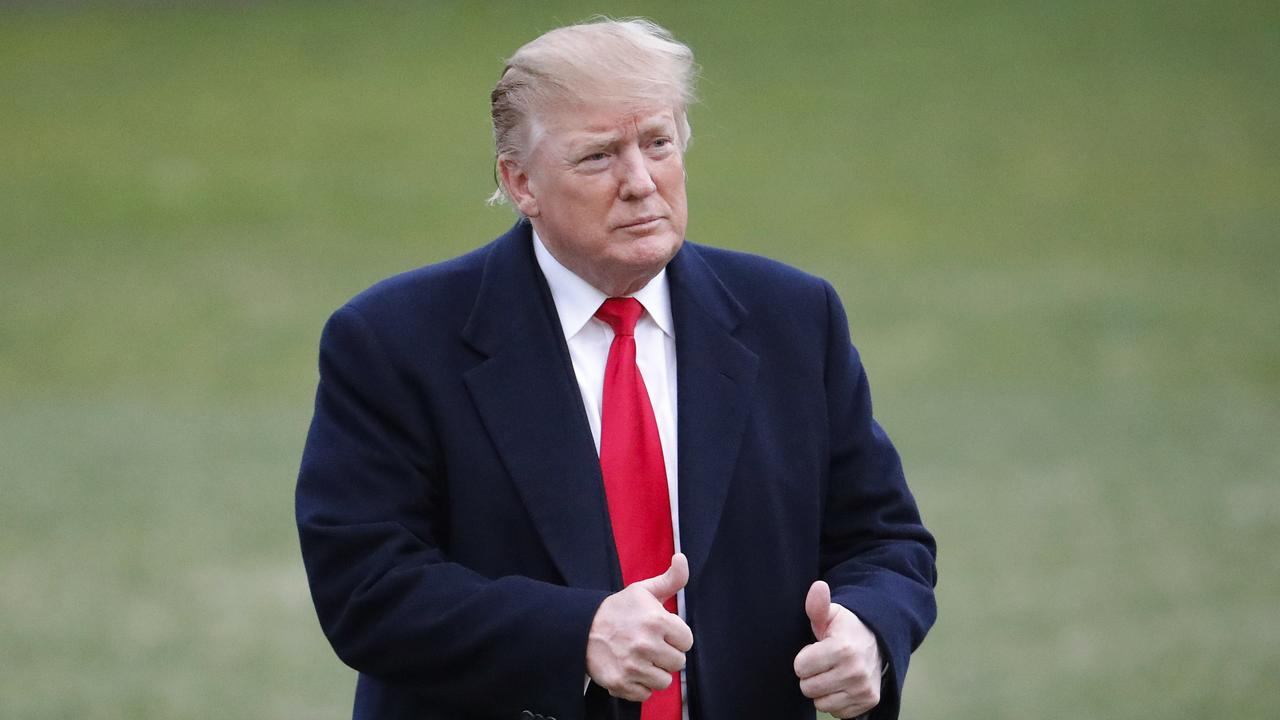Donations in the dark
After I left the union movement and went to work for The Bulletin in 1979, I was to learn a lot more about union elections.

Ironically, after I left the union movement as an organiser and went to work for The Bulletin in 1979, I was to learn a lot more about the semi-secret world of union elections and Labor’s internal ideological struggles.
The NSW Right of the Labor Party (especially the Labor Council) and BA Santamaria’s anti-communist National Civic Council, co-operated closely in two big internal union elections in which they opposed the Left, while I was at The Bulletin.
The first was a sustained effort to challenge the control of the Communist Party and the far Left in what was then the Amalgamated Metalworkers Union. The AMWU was the most powerful union in the country and the jewel in the Communist Party’s crown. Paul Keating thought its militancy had cost tens of thousands of Australians their jobs.
The campaign to dislodge the left from the AMWU, which was ultimately unsuccessful, went on all the years I was at The Bulletin (1979 to 1984) and beyond.
The NCC was a proscribed organisation in the ALP, and ALP members were not allowed to belong to it or co-operate with it too closely. But at ACTU conferences and the like, the Labor Right worked hand-in-glove with NCC union leaders.
Theoretically the ALP does not endorse or participate in any union ballot. For three decades, however, this was a complete fiction, at least until the late 1980s. Left-wing ALP officers helped left-wing candidates in union elections and right-wing ALP officers helped right-wing candidates in union elections. Everybody on the inside knew this but it was one of the weird silences of Australian politics because no one could really report on it.
The push against the Left in the AMWU was all of a piece with Bob Hawke’s strategy to bring the big four right-wing unions controlled or influenced by the NCC — the clerks, shop assistants, ironworkers and carpenters — back into the ALP itself. This was part of Hawke’s effort to permanently change the ALP.
Hawke was an immensely successful prime minister. He all but destroyed the Left’s influence on foreign policy and national security. Like Gough Whitlam before him, Hawke reformed the internal workings of the party to reduce the influence of the Left. He worked at this for years before he entered parliament. The difference with Whitlam was that in power Hawke never fell to relying on the Left to protect his leadership. Hawke’s strongest supporter was Kim Beazley, who had views on national security, the US alliance and Australian defence that the Left hated.
The resources of The Bulletin were used in a modest way to help the AMWU challengers. At a Sydney function that Bob Carr and I attended, Bob organised for one of The Bulletin’s photographers to take a posed photograph of a right-wing challenger, Charlie Bali, who was standing against the AMWU ruling team for the position of national organiser. This photo did not involve Hawke officially endorsing Bali. But it was a massive boost for Bali and used extensively in his campaign literature. The Left were ropeable when they saw it.
Perhaps the sense of being under threat because of their extremism contributed to the AMWU’s relative moderation under Hawke’s wages accord.
Another campaign the NCC and the Labor Council co-operated on was for Ivan Pagett when he challenged the Left’s control of the NSW Teachers Federation in 1982. Bob O’Connell, the NSW president of the NCC, asked me to have a look at some of the literature that would be sent out on behalf of Pagett’s candidacy.
By then I was relaxed in my identity as a journalist and often pretty intimately involved in the affairs of various contacts. My main contribution to the Pagett campaign was to find quotes from both Neville Wran and Nick Greiner to the effect that the Teachers Federation’s behaviour had hurt the reputation of teachers. Pagett won that election but only served one term and was unable to change the political orientation of the union.
The Labor Council and the NCC co-operated cautiously in this sort of thing and with some distance between them but they did co-operate. I hosted a small function at my parents’ home to generate some support for Vietnamese refugees. I invited the most influential people I knew who I thought might be sympathetic. Michael Easson, the deputy leader of the Labor Council, and Bob O’Connell were both there and fell to talking.
Later, on a couple of occasions they came over together to my house and I would leave them alone in the lounge room to have a cup of tea. Michael never met Bob Santamaria. At the funeral of Richard Krygier, the legendary Polish exile who had founded Quadrant, some years later, Michael was going to introduce himself to Santa. But Bob O’Connell, concerned perhaps that Michael might damage his standing within the Labor Party by doing so, grabbed his arm and said: “Probably not a good idea, Michael.”
One of the best leaders of the Labor Council, until he left at the end of 1983 to become a full-time politician, was Barrie Unsworth, who succeeded John Ducker. The Communist Party newspaper, Tribune, once described Unsworth as “the hardest liner of them all”. As premier, with his conservative back to basics campaign, Unsworth attracted Tony Abbott’s vote and nearly attracted him to joining the Labor Party. The NSW election which Unsworth went to as premier, in 1988, was the only time Tony voted Labor.
Unsworth was tough-minded when he needed to be in the interests of union members and certainly willing to back strike action. But he was never trying to smash capitalism. He wanted the economy to work. At one ALP conference Unsworth famously labelled the Left “north shore fascists” and “back yard marijuana growers”.
But despite the efforts of men as competent as Unsworth, big unions had become almost impervious to their members’ wishes about who made up their leadership. They structured themselves in a way that made it almost impossible to dislodge a ruling group. First, there would be a lot of elections. This may seem democratic, but generally in a union the turnout is very small. Repeated elections tend to exhaust potential challengers.
Also, every time a union organiser does something for a union member, he tries to recruit the member’s goodwill for the incumbent leadership. Even if a dissident is elected to a full-time official’s position, they will typically be faced with such ferocious isolation and psychological intimidation, and in some unions even physical intimidation, that they ultimately wilt and resign.
Campaigning in unions costs money. A serious challenging group may want to send out three mailings in the course of a campaign. If a union has 200,000 members this is immensely expensive. The idea that a few dissatisfied rank-and-file members could mount any kind of serious challenge is a fantasy. That is why so many unions are so inherently undemocratic. Plenty of serious challenges did take place, nonetheless, and sometimes they were successful. But they needed outside resources.
Left-wing unions would give money to left-wing challengers in right-wing unions. And sometimes right-wing unions would donate money to right-wing challengers in left-wing unions.
Union leaderships needed money to defend themselves, so that incumbents could send out their own campaign literature, as theoretically they could not spend union money on this. As a result many unions had fighting funds. Sometimes officials contributed part of their salaries to this. But raising money for unions from business was the real key. Businesses might advertise in union journals or buy tables at union fundraisers.
There was also a great deal of corporate giving, little of which was ever disclosed. When Ducker was the boss of the Labor Council he raised hundreds of thousands of dollars from business for use in union elections. There is no evidence that any of this money was ever misused.
Ducker sought and received donations from Kerry Packer. A lot of donations were mediated through companies associated with the Metal Trades Industry Association. In 1984, coincidentally the year I left The Bulletin, the Labor Council decided not to have anything to do with unions’ internal elections any more. The Fraser government passed legislation requiring both unions and companies to be more transparent in their financial disclosures. There was a last donation from business of a couple of hundred thousand dollars in cash that was kept for a time in the Labor Council safe. Some of this money went to the ALP for election purposes.
The corporate money going to internal union elections, which was known in the broad by a lot of people, was another weird silence in Australian politics.
The Labor Party had other institutional assistance resisting the communists and their allies. Occasionally ASIO officers would meet senior Labor Party office-holders to tell them about communist efforts at infiltration of the ALP, especially about ALP members who might be dual cardholders of the Communist Party. Much has been made of ASIO’s occasional liaison with the NCC. ASIO also had systematic liaison with the ALP. Some ASIO officers tried to recruit Labor figures as regular informants on the communists they came in contact with.
Big business also gave a lot of money to Santamaria for use in union elections. In Sydney, most of this went through the former Democratic Labor Party senator Jack Kane, who became a close friend of Tony Abbott and of mine. Tony Abbott was such a close friend of Jack’s that he ghosted Jack’s memoirs, Exploding the Myths.
In the finished book you can see some of the characteristic Abbott writing style, although he laboured well and effectively to maintain the sense of Jack’s voice. In the foreword of his book, which was published posthumously just after his death, Jack thanked a few people by name but didn’t mention Tony. Instead he also thanked unnamed friends and colleagues and said that “certain considerations of prudence ... restrain further enumeration”.
Jack is forgotten now but he was once a big figure in Australian politics. Before the great Labor split of the 50s he had been assistant secretary of the ALP in NSW. In some ways, Jack was the last of his type, the very embodiment of the traditional Irish-Australian Catholic Labor man.
He was all the good Irish stereotypes rolled into one. He loved a drink, loved a yarn, he could talk forever about the past but never lost interest in the present. He had all the blarney and Gaelic charm of the great Americans of his type, such as Tip O’Neill, a type that is gone now as the overt Irishness of American and Australian populations is wearing off over the generations.
It was this charm that made Jack a gifted fundraiser. He told me once of ringing Packer for a donation after Packer had suffered some car accident or illness: “What if you’d died with my cheque in your pocket?” he demanded.
In the last years of his life, Jack ran an outfit called Industrial Data. This was basically a fundraising operation for Santamaria’s union campaigns.
Part of it involved the production of an “insider” newsletter, giving gossip and policy analysis of union politics. Businesses paid handsomely for this newsletter.
Occasionally if Jack’s colleague was on leave or ill, I would anonymously write Jack’s Industrial Data newsletter for him, generally after ringing one or two sympathetic union officials for some insider stuff. Tony Abbott very occasionally wrote these newsletters for Jack as well.
So, in a previous life, many decades ago, albeit in the most marginal way imaginable, the Prime Minister was also involved in raising business money for right-wing unions.




To join the conversation, please log in. Don't have an account? Register
Join the conversation, you are commenting as Logout